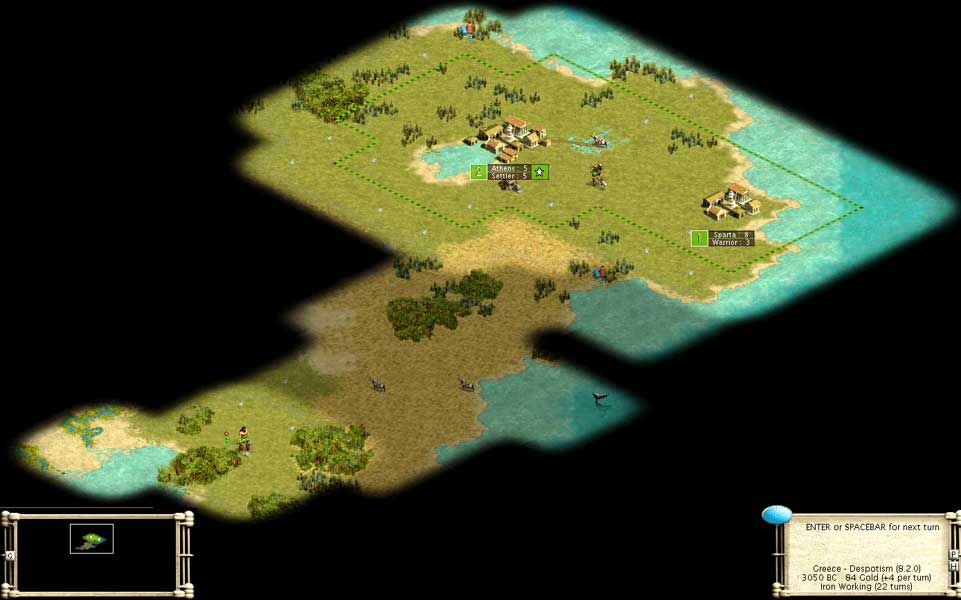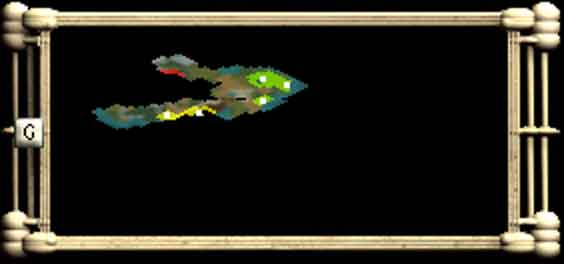MacBaldrick
Warlord
Txurce
I think I got it right but it is a judgement call.
Basic Grassland (2+0+0) + cattle gives 3(4)+1+0. Adding mine gives 3(4)+2+0 while Irr gives 4(5)+1+0. You can have either extra food or resources. The extra food is capped in all options during Despotism - yes? IMHO we need resources more than food to build units/improvements in the capital.
Ditto the other bonus grassland squares (basic 2+1+0) with mines gives 2+2+0 while Irr. gives 2(3)+1+0 again capped. There are enough bonus grassland tiles to irrigate later for better growth of 3+1+0 tile (mine non-bonus tiles for 2+1+0).
Yes more food means faster growth but it will take resources to build worker to mine grassland to get resources. I hav'nt analysed it at Crackers level to see the best outcome over tens of turns.
In all cases roads will add missing trade/gold.
Tao / Heike
City on SE coast capturing silk seems good idea (I thought so) but later exploration shows silk can be covered by SW city with Cattle & Whale ! City in SE will have to be right on coast with harbour - right place to set sail eastward later in the game.
I think I got it right but it is a judgement call.
Basic Grassland (2+0+0) + cattle gives 3(4)+1+0. Adding mine gives 3(4)+2+0 while Irr gives 4(5)+1+0. You can have either extra food or resources. The extra food is capped in all options during Despotism - yes? IMHO we need resources more than food to build units/improvements in the capital.
Ditto the other bonus grassland squares (basic 2+1+0) with mines gives 2+2+0 while Irr. gives 2(3)+1+0 again capped. There are enough bonus grassland tiles to irrigate later for better growth of 3+1+0 tile (mine non-bonus tiles for 2+1+0).
Yes more food means faster growth but it will take resources to build worker to mine grassland to get resources. I hav'nt analysed it at Crackers level to see the best outcome over tens of turns.
In all cases roads will add missing trade/gold.
Tao / Heike
City on SE coast capturing silk seems good idea (I thought so) but later exploration shows silk can be covered by SW city with Cattle & Whale ! City in SE will have to be right on coast with harbour - right place to set sail eastward later in the game.



 )
)

